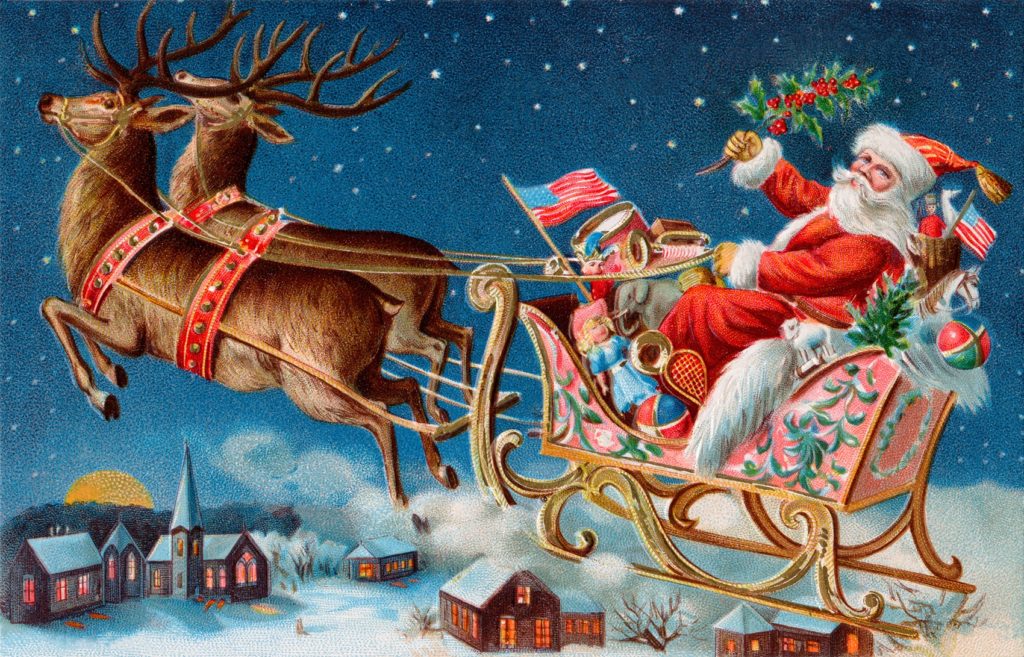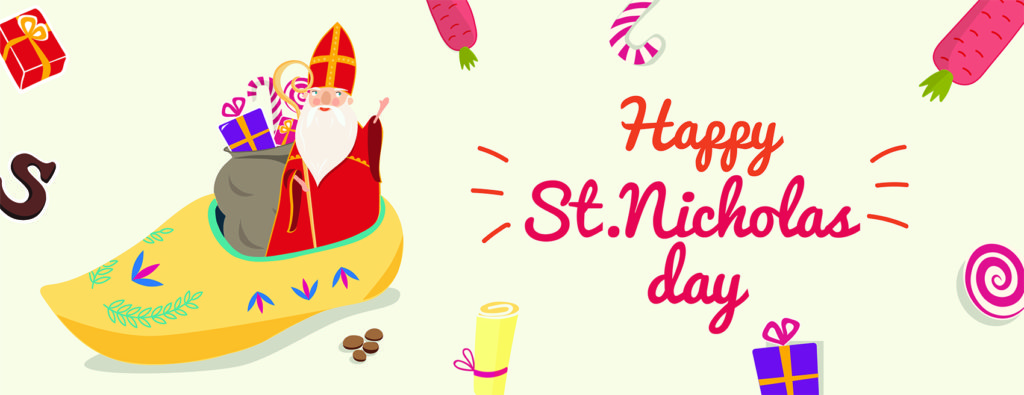Raising my children in England but wanting to keep German Christmas traditions caused a lot of confusion for them. Who is St Nicholas? Why do we get presents on 6th and 24th of December but not on the 25th? Why does Santa Claus not visit us? Who are Kris Kringle and Father Christmas?
It all started with St Nicholas. He was from a wealthy family, became a Bishop in the 4th Century and lived in Myra – today’s Turkey. He loved helping the poor. St Nicholas adventures began when he helped a man with three daughters who could not afford dowries in order to marry. One-night St Nicholas climbed up the roof of the man’s home and threw a sack filled with gold through his chimney. It landed in a stocking that was put there to dry.
This wonderful provision happened again when it came time for the second daughter to marry. Now the father wanted to know who was doing this and he set out to catch his benefactor. When it came time for his third daughter to marry, he caught St Nicholas in the act and the secret was out. From now on every secret gift was from St Nikolaus and he became the patron saint and later for sailors. He died in exile on the 6th of December 345 or 352.
In many countries throughout Europe children still celebrate St Nicholas by placing a boot outside their door or by the chimney on the eve of the 5th December. In the morning they wake to find it filled with small presents nuts and oranges the next morning.

During the Reformation in the 16th Century, St Nicholas like other saints became unpopular. But who shall bring the presents now?
In England they decided to use Father Christmas or Old Man Christmas, a figure based from the mystery plays of the middle ages.
In France it was Père Noel. In Germany and Austria it was the Christ child with blond curls and wings, and the Americanised pronunciation of this led to Kris Kringle in the 1840s.
So, what about Santa Claus then? Who is he? When the Dutch colonized much of New York before the American Revolution they brought their traditions with them, one of them was the idea of Sinterklaas, the Dutch word for St Nicholas. Again, the American pronunciation turned it into Santa Claus.
That brings us to the modern Santa Claus, the creation of which is contributed to two New Yorkers in the 19th Century. In 1822 Clement Clarke Moore, a minister, wrote the now famous poem “Twas the night before Christmas.” In his poem, Santa flew through the sky in a sleigh with eight reindeer and brought gifts through the chimney.

But at that time he didn’t look like today’s Santa Claus. That happened a few years after the poem was published, when a German born cartoonist working for Harper’s Weekly, gave Santa Claus his grandfatherly looks with a big belly and white beard.
And no – the red and white costume has nothing to do with the influence of Coca-Cola, as many believe, but from the traditional clothing for Bishops which is red and white: So we come full circle to Bishop St Nicholas.

